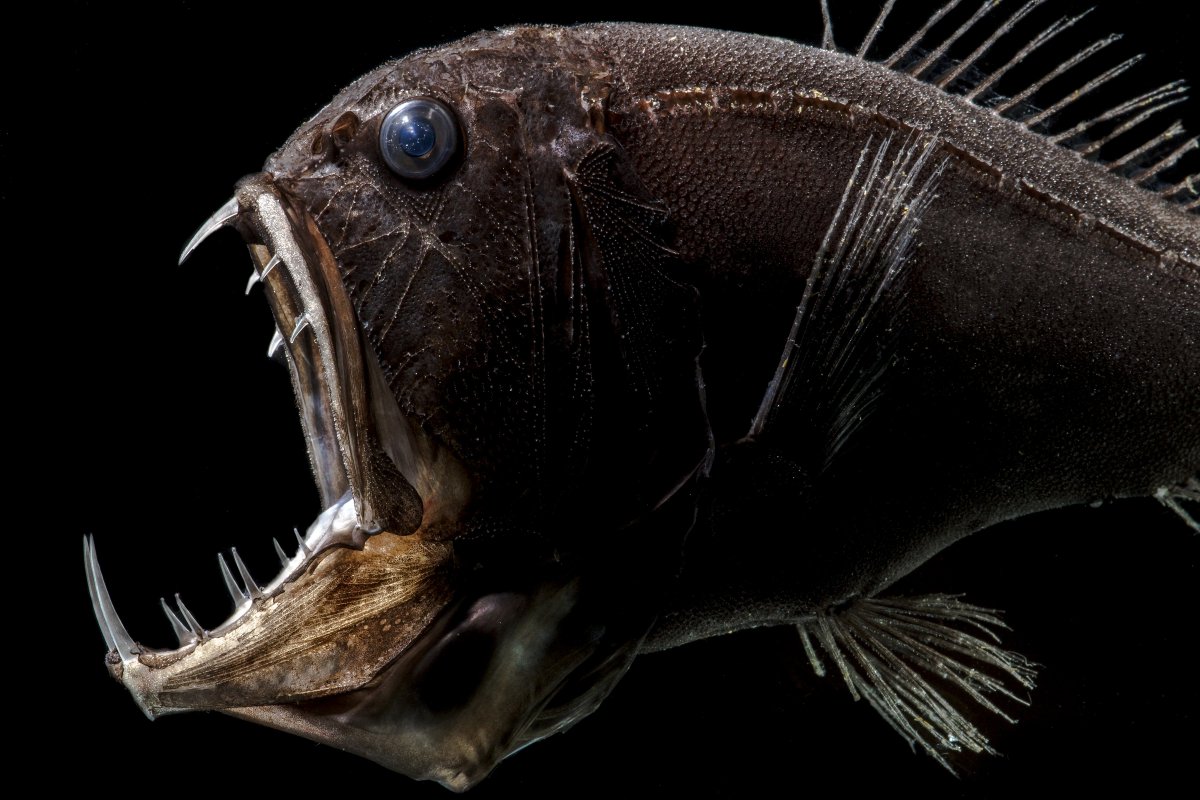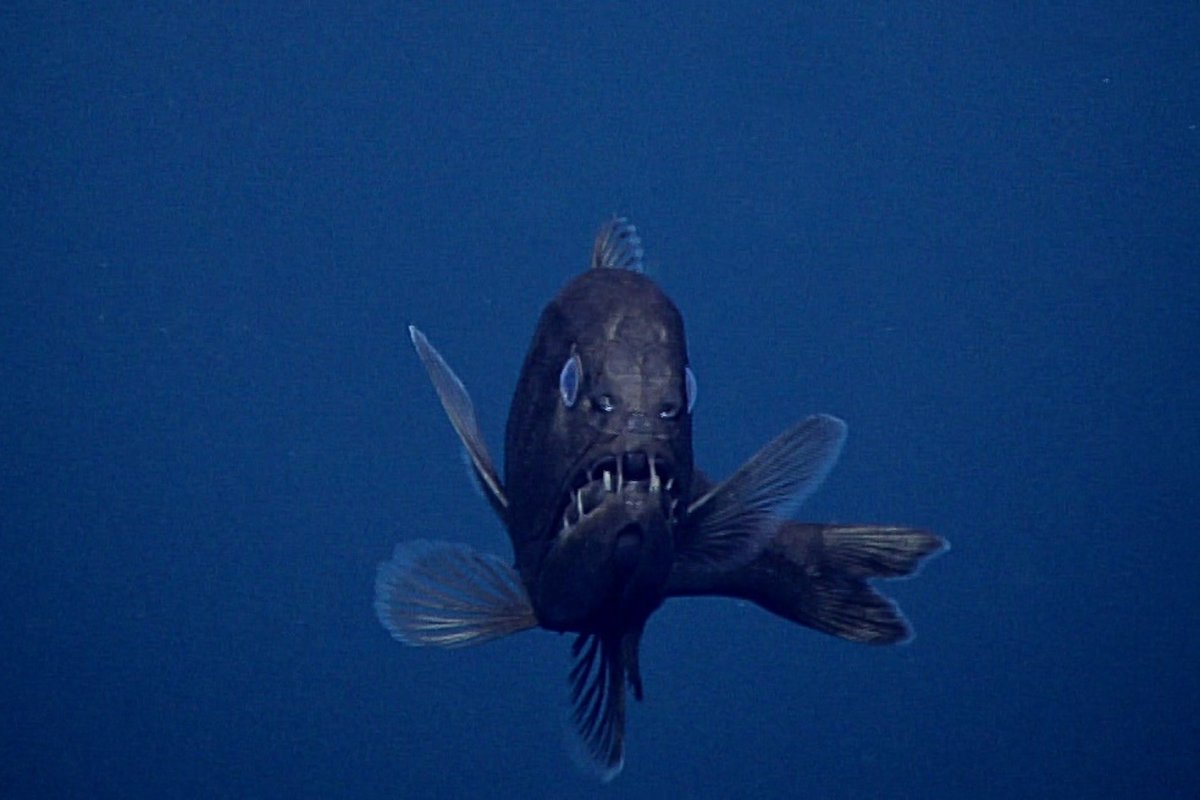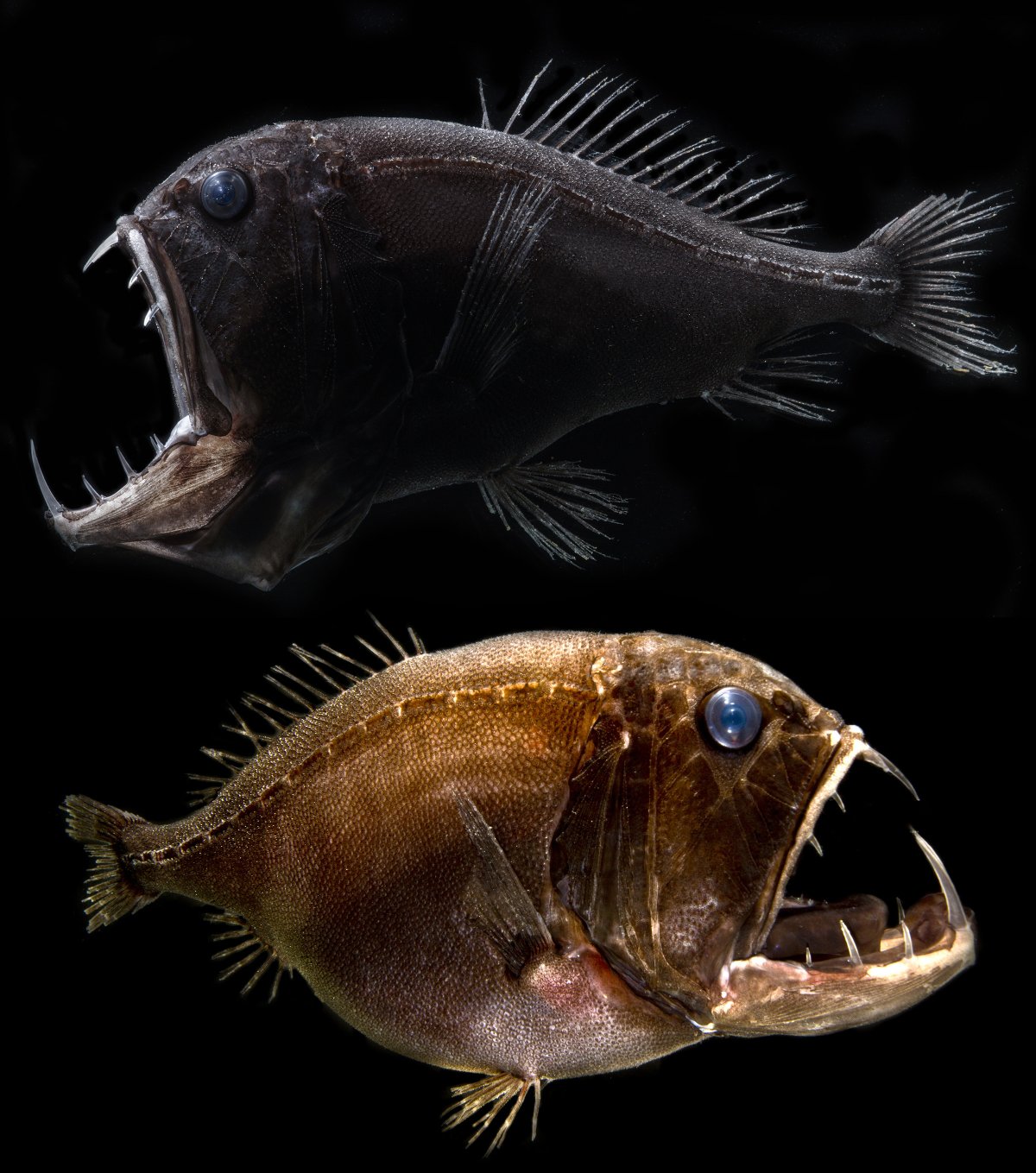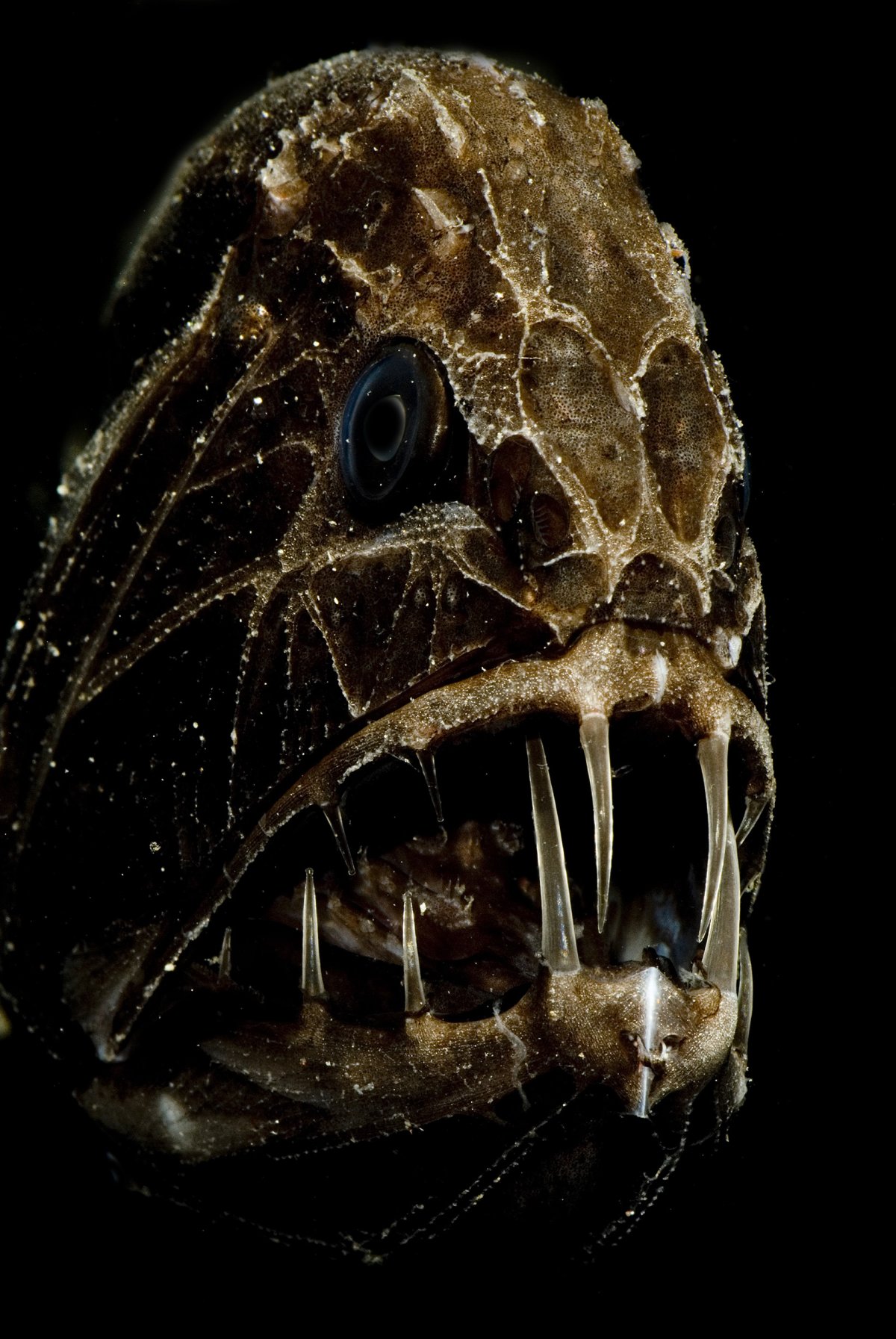Deep in the ocean lives a ghoulish fish with huge and menacing, fang-like teeth.
The aptly named common fangtooth fish (Anoplogaster cornuta)—sometimes referred to by its nickname "ogrefish"—inhabits deep waters all around the world, occurring at depths between 650 and 6,500 feet, although the species has been observed as far down as 16,000 feet. This makes it one of the deepest-living fish.

While the fangtooth fish sometimes rise near to the surface at night to feed, they generally spend their time in waters deeper than 3,300 feet in the open ocean away from land, according to Tracey Sutton, a professor with the Guy Harvey Oceanographic Center at Nova Southeastern University in Florida.
"The one species is truly a child of the Earth, occurring in all but the polar seas," Sutton told Newsweek.
The common fangtooth fish is rarely seen by humans—the Monterey Bay Aquarium Research Institute in California, for example, has spotted the creature fewer than 10 times in around 30 years of conducting deep-sea expeditions with remotely operated vehicles. However, this does not necessarily mean that the fish is truly rare.
"It occupies nearly all of the global deep ocean, so its total numbers could actually be staggeringly high—though it is a loner, not occurring in groups, and thus not abundant in any specific place," Sutton said.
While there is only one confirmed species in its family, a second was described from a juvenile specimen but never collected as an adult, according to Sutton. Fangtooth fish have no known close relatives.
Despite its small size—the common fangtooth fish reaches lengths of around 6 to 7 inches—the characteristic features of this species are the "huge" head and teeth relative to the rest of its body.
The mouth of this fish is full of long, pointed teeth—including two sets of large fangs on the lower and upper jaw—which enable it to catch and hang on to prey of many different sizes, a beneficial adaptation in the deep sea where food can be hard to come by.

Common fangtooths tend to be more active than many other deep-sea fishes and will seek out food by heading toward the surface at night—rather than lying around and waiting for prey like other ambush predators, who might using various luring techniques.
The diet of the common fangtooth includes other fish, crustaceans and cephalopods—the group of animals that contains octopuses, squid and cuttlefish.
When a fangtooth approaches prey animal, the fish opens its huge mouth and sucks the unfortunate victim inside.
"They are voracious—they seem to eat anything that will fit in their mouths," Sutton said.

The teeth of this species, relative to body size, are larger than any other marine species, according to the Smithsonian Institution. They are so big, in fact, that the fish has special pouches on the roof of its mouth to accommodate the fangs on the lower jaw when the mouth is closed.
This species has relatively poor eyesight but to compensate for this, as well as the low light conditions in the water where it lives, the fangtooth has an unusually prominent lateral line—a sensory system found in fish and aquatic amphibians—that helps it to sense movement and vibrations in the surrounding water.

"It has a complex arrangement of nerves on its head. In a manner of speaking, it 'listens' with its face," Sutton said.
This arrangement of nerves is the "front end" of the lateral line system, according to Sutton. It explains the heavy "sculpting" on the front of the fangtooth's face, which you can see in the image above.
The common fangtooth is dark brown to black in color, which helps the fish to camouflage itself in the deep ocean—helpful for catching prey or avoiding predators. Its body is also covered in prickly scales and spines.

Because they live so far down, scientists know little about their life and reproduction habits, but the fangtooth fish reproduce via external fertilization—a process in which females lay a clutch of eggs as the males release sperm into the water to fertilize them.
The fish do not have many predators, but animals that do hunt them include tuna and marlin. While fangtooth fish live far away from human civilization, they still face several man-made threats.
For example, deep-sea mining activities and fossil fuel exploration can cause "catastrophic" damage to deepwater ecosystems—as occurred after the Deepwater Horizon oil spill in the Gulf of Mexico—according to Sutton.
"Fisheries are also expanding into deep pelagic (being neither close to the bottom nor near the shore) waters as coastal fisheries are depleted," Sutton said. "Last, climate change is predicted to change ocean circulation, which is predicted to reduce the amount of pelagic life."
The fangtooth fish is one of millions of species thought to be living in the deep ocean, most of which have never been seen or described by humans. Among these weird and wonderful deep-ocean creatures are the vampire squid, dumbo octopuses and the bloody-belly comb jelly.
Images for this article were provided by Danté Fenolio. Fenolio is vice president of the Center for Conservation & Research at San Antonio Zoo.
Do you have an animal or nature story to share with Newsweek? Do you have a question about deep sea creatures? Let us know via nature@newsweek.com.
Uncommon Knowledge
Newsweek is committed to challenging conventional wisdom and finding connections in the search for common ground.
Newsweek is committed to challenging conventional wisdom and finding connections in the search for common ground.
About the writer
Aristos is a Newsweek science reporter with the London, U.K., bureau. He reports on science and health topics, including; animal, ... Read more
To read how Newsweek uses AI as a newsroom tool, Click here.








